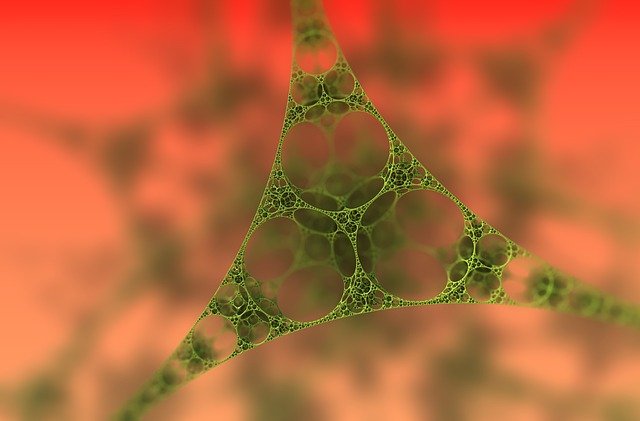
There are currently no effective treatments for glioblastoma multiforme, the most prevalent and deadly form of brain cancer.
In vivod, TargetGBM has developed a nano therapy that can pass the blood-brain barrier and target tumor cells specifically in vitro. Patients with incurable glioblastoma multiforme (GBM) bear a dismal prognosis, but new nanotechnology developed by TargetGBM may be able to change that.
The treatment was designed with the goal of increasing survival and improving the quality of life for those suffering from this deadly disease.
However, as cancer reaches deep into healthy brain tissue, surgery is ineffective in removing it all. Additionally, chemotherapy cannot reach the remaining cells from which new tumors originate since the blood-brain barrier has a permeability to it.
The TargetGBM project funded by the EU has developed nanoparticles with a unique coating that prevents them from entering other tissues.
Instead, they are attracted to certain molecules on the surface of tumor cells and only enter the cancerous cells.
Once inside, they not only destroy the cells but release anti-angiogenesis agents that prevent new blood vessels from forming, starving future tumors of their nutrients.
It has been successfully tested in mammals and trials on humans are planned for the near future.
This technology has the potential to change survival rates for those with malignant gliomas, and it may be possible to eventually use a modified version on other forms of cancer as well.
“If we can validate our findings in mice, this therapy may be a crucial step toward developing an effective cure for brain disorders such as tumors,” says Salvador Borrós, project coordinator from IQS, the project host.
Targeted nano therapy
Chemotherapy is ineffective in treating residual cancer cells that remain after neurosurgery because it does not reach all of the sick cells and is frequently plagued by side effects.
Intravenous treatment, on the other hand, may reach remaining tumor cells if they are able to pass the blood-brain barrier.
Targeted non-viral delivery systems can aid in selectively delivering anti-angiogenesis agents to the tumor cells, but the problem is getting them across the barrier.
A significant hurdle with IV treatment is that larger molecules tend to be unable to cross it.
Since chemotherapy drugs are large molecules, they cannot pass this protective barrier and thus remain ineffective at treating lingering cancer cells after surgery.
The TargetGBM group invented a nanosystem that can deliver therapy, such as genetic material, only to the cells of interest.
However, because of the positive charge of the polymer, which serves as a delivery vehicle for the particles, any cell may be targeted. As a result, the team had to develop a coating that prevents this from happening.
This coating is composed of nanoparticles that block the positive charges on the surface, which serve as a defense against penetration into healthy tissues.
The end result?
These positively charged particles are only able to enter cancerous cells containing tumor necrosis factor alpha (TNF), which opens up the possibility for personalized therapies based on patients’ tumors’ molecular make-up.
In vivo testing of the TargetGBM therapy has been successful in mice and shows no evidence for side effects from treatment with the nanoparticles alone.
The development of a targeted nanosystem is an important step toward increasing survival rates for those with incurable brain cancer. In addition, this technology could be used as a generalized approach to developing cancer therapies.
This treatment may be a crucial step toward developing an effective cure for brain disorders such as tumors. Our next goal is to determine whether we can achieve similar results in human patients with brain tumors and we will be working on this in the upcoming months.
Salvador Borrós, project coordinator from IQS
The tests have been successful. “Thanks to the targeting molecules, we’ve seen reduced non-target cell penetration and highly targeted entry of target cells.
The nanoparticles may also enter cells in the blood-brain barrier, which is a major step toward crossing it,” says Benjamín Oller-Salvia, who was previously a researcher and leader of the project.
A patent is being applied for on this system, so follow-up work will center on testing in humans.
Phase I clinical trials are expected to begin soon with the goal of developing a genetic material delivery system for tumor cells in human patients with secondary malignant gliomas since these are incurable therapies that can be treated with this therapy.
However, it will be some time before the therapy can actually be used on humans. Before that happens, more testing is needed.
After that, clinical trials need to begin on patients to see if there are any side effects associated with the drug or whether it gets into the brain at all. These steps take years and cannot be rushed.
- See also: what is neuroplasticity and how does it work?
- See also: the brain can recall and reactivate prior immunological responses
The modular architecture is flexible and adaptable

The TargetGBM findings are in line with the European Commission’s priorities of health, including cancer treatment, as well as for biotechnology – including gene therapy and nanotechnology -, which it has labeled a major societal challenge.
“While the outcomes are encouraging, we are still a long way from a final application.”
If we get good results in mice, we’ll look for investment for preclinical trials,” explains Oller-Salvia.
The team plans to protect and potentially market several of its engineered components, including the coating, targeting molecules, and anchoring molecule method.
Other types of cancers or even other illnesses may be treated with the project’s modular nanobiotechnologies in the future.
Borrós also points out that this is just one of many possible applications for these types of nanotechnological systems. “We are applying our technologies to different areas where treatment monitoring or delivery could benefit from them,” he says. This, he notes, will help patients get better treatments more quickly.”
The Target GBM project, backed by the Marie Skłodowska-Curie Actions program, has already received funding for a new research initiative on Protein Targeted Nano- and Biotherapeutics at IQS led by Oller-Salvia.
Conclusion
TargetGBM project has developed a new nanobiotechnological system capable of selectively delivering the cytokine TNF to tumor cells, thanks to its multimodular design, which obviates the need for endocytosis and exploits receptor-mediated cytotoxicity.
A patent is being applied for on this system and clinical trials on humans are expected to begin soon.
The new nanobiotechnological system developed by TargetGBM represents a major advancement in the field of cancer treatments and shows that we’re getting closer and closer to creating effective cures for previously incurable diseases.



